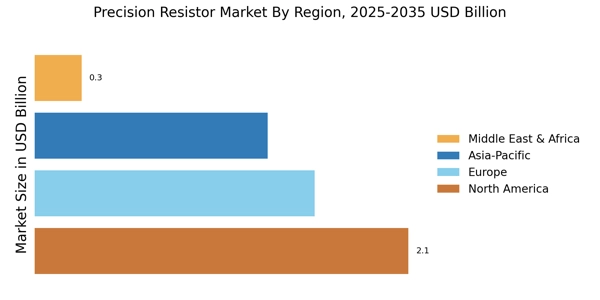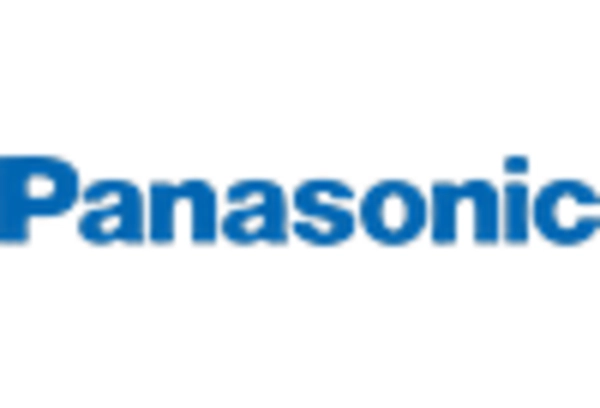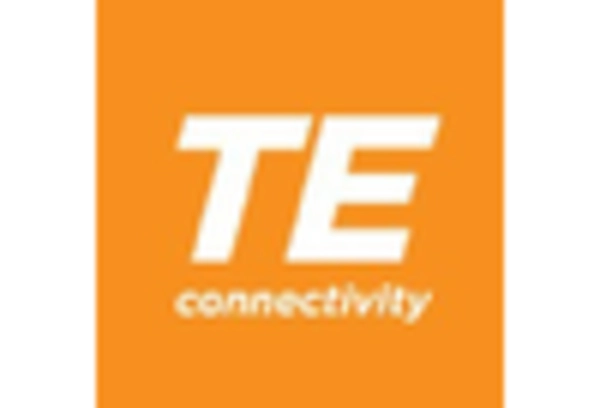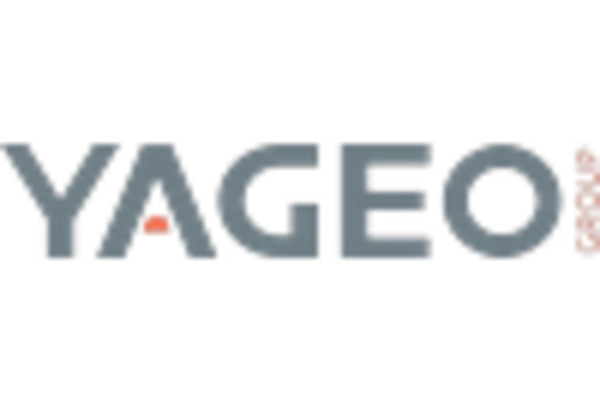Growth in Consumer Electronics
The Precision Resistor Market is witnessing significant growth driven by the consumer electronics sector. With the proliferation of smart devices, including smartphones, tablets, and wearables, the demand for precision resistors is on the rise. These components are crucial for maintaining the performance and reliability of electronic circuits. The consumer electronics market is expected to expand at a rate of around 5% annually, which bodes well for the precision resistor segment. As manufacturers seek to enhance the functionality and efficiency of their products, precision resistors become indispensable in achieving these goals. Furthermore, the trend towards miniaturization in consumer electronics necessitates the use of high-precision components, thereby further propelling the Precision Resistor Market. This growth trajectory indicates a robust future for precision resistors as they become integral to the next generation of consumer electronics.
Rising Demand in Automotive Sector
The Precision Resistor Market is experiencing a notable surge in demand from the automotive sector. As vehicles become increasingly reliant on electronic systems, the need for precision resistors to ensure accurate performance and reliability is paramount. The automotive industry is projected to grow at a compound annual growth rate of approximately 4.5% over the next few years, which directly influences the demand for precision resistors. These components are essential for various applications, including electric vehicles and advanced driver-assistance systems (ADAS). The integration of precision resistors in these systems enhances safety and efficiency, thereby driving their adoption in the automotive sector. As manufacturers strive to meet stringent regulatory standards, the Precision Resistor Market is likely to benefit from this trend, as precision resistors play a critical role in ensuring compliance with safety and performance regulations.
Increased Focus on Renewable Energy
The Precision Resistor Market is likely to benefit from the growing emphasis on renewable energy sources. As nations strive to transition towards sustainable energy solutions, the demand for precision resistors in solar inverters and wind turbine systems is expected to rise. Precision resistors are essential for ensuring the efficiency and reliability of these renewable energy systems. The renewable energy sector is projected to grow at a compound annual growth rate of approximately 8% over the next decade, which will likely drive the demand for precision resistors. This trend reflects a broader commitment to reducing carbon emissions and enhancing energy efficiency. As the Precision Resistor Market aligns with these sustainability initiatives, it stands to gain from increased investments in renewable energy technologies, thereby solidifying its position in the evolving energy landscape.
Advancements in Industrial Automation
The Precision Resistor Market is poised for growth due to advancements in industrial automation. As industries increasingly adopt automation technologies, the need for precision resistors in control systems and sensors becomes more pronounced. These components are vital for ensuring accurate measurements and reliable performance in automated processes. The industrial automation market is anticipated to grow at a rate of around 6% annually, which will likely enhance the demand for precision resistors. As manufacturers seek to optimize production efficiency and reduce operational costs, precision resistors play a crucial role in achieving these objectives. This trend indicates a promising future for the Precision Resistor Market, as it aligns with the broader movement towards smart manufacturing and Industry 4.0.
Emerging Applications in Medical Devices
The Precision Resistor Market is experiencing growth due to emerging applications in medical devices. As the healthcare sector increasingly incorporates advanced technologies, the demand for precision resistors in medical equipment is on the rise. These components are essential for ensuring accurate readings and reliable performance in devices such as diagnostic equipment and monitoring systems. The medical device market is projected to grow at a compound annual growth rate of approximately 5.5%, which will likely drive the demand for precision resistors. As healthcare providers seek to enhance patient outcomes through technology, precision resistors become integral to the development of innovative medical solutions. This trend suggests a robust future for the Precision Resistor Market, as it aligns with the ongoing advancements in healthcare technology.
















Leave a Comment